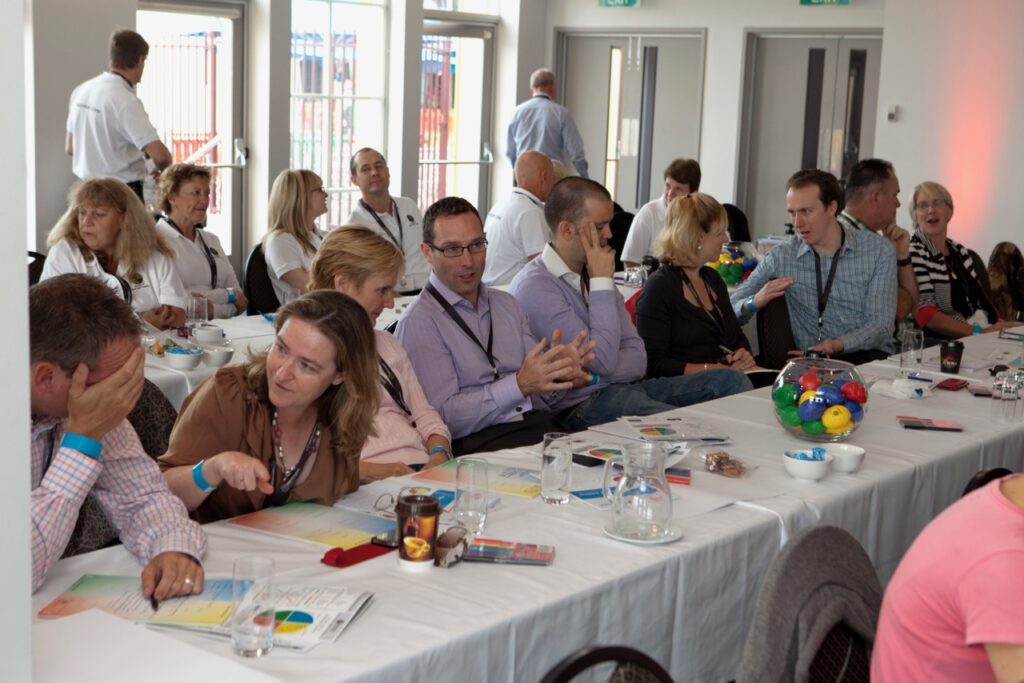It is without a doubt that problem-solving is a crucial component of any successful team, and for an organisation to achieve its objectives, an environment that promotes efficient problem-solving strategies is vital. By incorporating diverse perspectives, teams can enhance their problem-solving strategies, leading to more comprehensive and innovative solutions.
What is Problem Solving?
The process of problem solving consists of defining a problem, determining its cause, selecting and prioritising potential solutions, and implementing them. In this definition alone, it is clear that effective problem-solving requires a multifaceted approach involving various skill sets – and that’s where cognitive diversity is so important.
Navigating work in today’s fast-paced world presents a slew of new challenges, where businesses are increasingly realising the value of bringing together groups of people with varied thinking styles, talents, and views. We can unleash collective intelligence and teamwork that will adapt your team’s approach to problem-solving to new heights by developing a more cognitively diverse team.
The Strength of Cognitive Diversity in Problem Solving Strategies
Cognitive diversity involves leveraging the different thinking styles, perspectives, and approaches within a team. Recognising the value of cognitive diversity is essential for developing the best problem-solving strategies.
Herrmann’s research relies on cognitive diversity’s capacity to value various viewpoints and harness the strengths of analytical brains and creative minds working together. Team building with cognitive variety in mind allows teams to approach problem-solving from many perspectives, resulting in unexpected and game-changing solutions.
1) Avoids Groupthink and Unconscious Bias
By breaking free from conformity and challenging assumptions, teams avoid the risks of groupthink and unconscious bias, exploring problems from various angles and having consideration of multiple solutions, leading to more robust problem-solving strategies.
2) Develops Superior Problem Solving Outcomes
The beauty of cognitive diversity is its potential to push your team’s problem-solving strategies to new levels. Neuroleadership states that diverse teams achieve superior conclusions because they undergo more thorough testing and possess a greater range of inputs from the start.
When individuals with various information, experiences, and expertise form teams, they offer a fertile field for innovation. Teams can explore unventured pathways and discover unique solutions that might otherwise be overlooked by fostering a culture of curiosity and receptivity to new ideas. This also promotes an environment where team members feel safe to share their opinions and insights, and lowers the risk of unconscious bias affecting proposed solutions.

3) Fosters an Inclusive Environment for Greater Returns
Creating an inclusive environment is key to maximising the benefits of cognitive diversity. A report from McKinsey found that companies that embrace ethnic and racial diversity in management are 35% more likely to have greater industry returns. Organisations should foster a culture that values and encourages diverse perspectives within each team, and cross-collaboratively. By embracing inclusivity, teams can ensure that all individuals feel comfortable contributing their ideas and opinions. This inclusive approach allows for a richer exchange of ideas and promotes collaborative problem-solving.
4) Encourages Collaboration and Knowledge Sharing
Collaboration and effective communication play a vital role in developing the best problem-solving strategies. By actively promoting collaboration, organisations can encourage team members to work together, leveraging their diverse talents and expertise. This collaborative approach enables team members to share insights, challenge the status-quo, and develop comprehensive problem-solving strategies. Effective communication ensures that all perspectives are considered, facilitating a holistic approach to problem-solving.
5) Promotes Critical Thinking and Innovation
Cognitive diversity encourages critical thinking and innovation in problem-solving. By valuing different perspectives, organisations open up avenues for unique insights and approaches. An article by the HBR states that diverse teams are smarter as they are more likely to scrutinise facts and each other’s contributions, therefore leading to better outcomes. Encouraging team members to think critically and challenge assumptions fosters a culture of continuous improvement and in turn, more effective problem-solving strategies.
6) Continual Learning and Development Opportunities
Maximising cognitive diversity requires continuously developing and nurturing the skills and knowledge of team members. Organisations should provide learning and development opportunities’ that enhance problem-solving capabilities. Training programs, workshops, and mentoring initiatives can equip team members with the tools and techniques necessary to leverage cognitive diversity effectively, and to continually improve the team’s approach to problem-solving strategies.
4 Ways To Start Increasing the Efficiency of Your Team’s Problem Solving Strategies with Cognitive Diversity
You can’t tell if your team is cognitively diverse from the outside. This makes it very difficult to forecast how long solving various problems will take and to keep your work within scope. As such, it is important to bring your team’s cognitive diversity to light, so the team as a whole can understand each other better and take a more holistic approach. This is important because teams that represent cognitive diversity solve complex problems faster than teams made up of individuals who approach problem-solving in the same way.
There are a range of strategies you can employ in your team to promote faster problem-solving that allow you to play to each team member’s strengths and ways of working. From assigning clear roles within the team, the right team members for a task, participation in meetings, and setting an agenda to name a few easy-to-implement techniques. It is the combination of diverse perspectives and collaborative problem-solving techniques which allow teams to find swift and effective solutions.
1) Harness Emotional Diversity for Solving Problems faster
According to a Harvard Business Review (HBR) study, teams that are more intellectually varied can solve problems faster. This study also found that a more emotionally diverse team is more effective when dealing with uncertain or difficult scenarios. By harnessing the collective intellect of a diverse team, organisations promote problem-solving strategies that tackle challenges from all angles, taking into account a range of insights and approaches. This multidimensional approach enables teams to navigate complexity with agility, adapting their problem-solving strategies to changing scenarios and untangling intricate problems more efficiently.
2) Develop a Supportive Environment for Effective Problem Solving
To harness the full potential of cognitive diversity, organisations must actively cultivate an inclusive and supportive environment. By fostering respectful communication, transparency, and active listening, teams can establish a safe space where they encourage and value diverse ideas, thereby boosting productivity. Teams that work on their emotional intelligence collaborate better together and in doing so, boost overall organisational success.
3) Build a Balanced Team
By building balanced teams that leverage a tapestry of skills, backgrounds, and perspectives, organisations ensure that they represent and consider a variety of viewpoints. Collaboration becomes the catalyst for success, as team members share their knowledge and experiences, leading to collective growth and superior problem-solving outcomes.
“Diversity and inclusion are most potent when channeled toward a company’s hardest problems, or most complex opportunities. If managed appropriately, they can drive profoundly enhanced outcomes.”
– Fred Keeton, Keeton Iconoclast Consulting, former vice president of external affairs and chief diversity officer, Caesars Entertainment
4) Create Team Leadership and Cognitive Diversity Advocates
Leaders must advocate for cognitive diversity inside their organisations. Leaders create an environment where varied ideas are welcomed and respected by setting the tone and supporting diversity and inclusion at all levels. Creating safe environments where team members feel comfortable discussing bold ideas and taking risks is critical for cultivating an innovative culture and more efficient problem-solving strategies. Recognising and appreciating team contributions promotes success and emphasises the relevance of cognitive diversity in obtaining remarkable problem-solving results.
Guided by the principles of Whole Brain® Thinking and the HBDI, cognitive diversity is a powerful driver of effective problem-solving strategies in teams. By embracing varied thinking styles, fostering a culture of collaboration, and valuing different perspectives, organisations can unlock the full potential of their teams.
To learn more about how cognitive diversity can help to build more effective problem-solving strategies in your team, we invite you to download our comprehensive whitepaper.
If you want to learn more about how Whole Brain® Thinking and the HBDI® can help you and your organisation, have a look at how it works here or get in touch and we’ll help you find the right solution.


